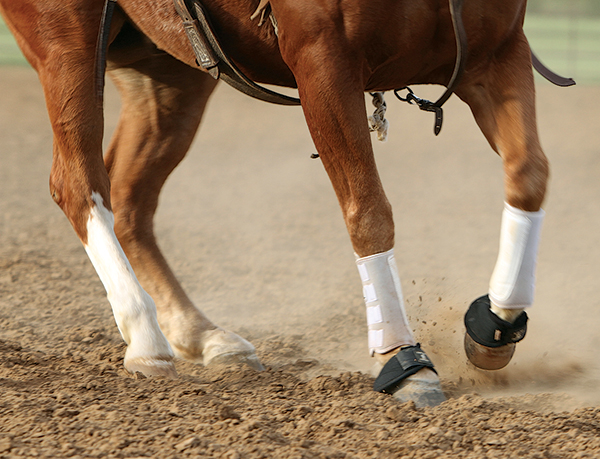Is arthritis a factor with your senior horse? Lindsey Moneta, DVM, a veterinarian with Pacific Crest Sporthorse in Oregon City, Oregon, answers key questions you may have on this topic.

Are horse and human arthritis similar?
In a general sense, yes. Arthritis is a broad term to describe joint disease. While there are many types and causes of arthritis, the most common type that horse owners encounter is osteoarthritis. This condition occurs when the cartilage normally cushioning the joint surfaces wears away. This leads to bone rubbing on bone, which can manifest as joint swelling, pain, and stiffness.
The disease process is progressive for osteoarthritis, and while there’s no cure, there are many steps you can take to minimize discomfort and improve quality of life for your horse.
How important is catching it early?
As with any disease, early detection enables you and your veterinarian to better manage your horse to help him feel and perform well. Particularly in conditions such as osteochondritis (developmental bone disease in young horses) or traumatic injuries, assessing and addressing issues affecting the joint can reduce the chances that arthritis will set in later. Many horses can continue to have athletic careers after arthritis is diagnosed—given the right management strategies and treatments.
What can my vet do to help?
Your veterinarian is essential for determining which of your horse’s joints are affected by arthritis, and to what extent. He or she will typically employ a combination of palpation, joint-flexion tests, and diagnostic imaging such as radiographs and ultrasound. Further imaging studies such as nuclear scintigraphy (bone scan), MRI, or CT can be helpful in more complicated cases.
After the diagnosis, your vet can advise on the best treatment regimen for your horse. Treatments often involve multiple approaches depending on the horse and the number of joints affected.
Common treatments include injections of corticosteroids and hyaluronic acid into the joint, systemic injectable therapies, pain relief via non-steroidal anti-inflammatories, and oral supplementation. Your veterinarian can help you decide which therapies will be best for your horse.
What can I do to help?
Many things! Consistent exercise tailored to your horse’s comfort and athletic level is great for keeping joints limber. Depending on the severity of your horse’s condition, exercise can range from simple pasture turnout to a regular riding schedule.

Senior horses with multiple arthritic joints often do best when they have 24/7 access to a paddock or pasture (along with adequate shelter). Be sure to maintain pastures and arenas so your horse isn’t slogging through deep or uneven footing.
Keeping your horse at an ideal weight—and especially not overweight—will reduce load bearing on painful joints. Regular skilled farrier work also helps reduce pain, particularly when arthritis affects the lower limb joints.
Finally, knowing your horse well so you can tell when he might need extra help or a visit from your vet is key to his continued comfort.






